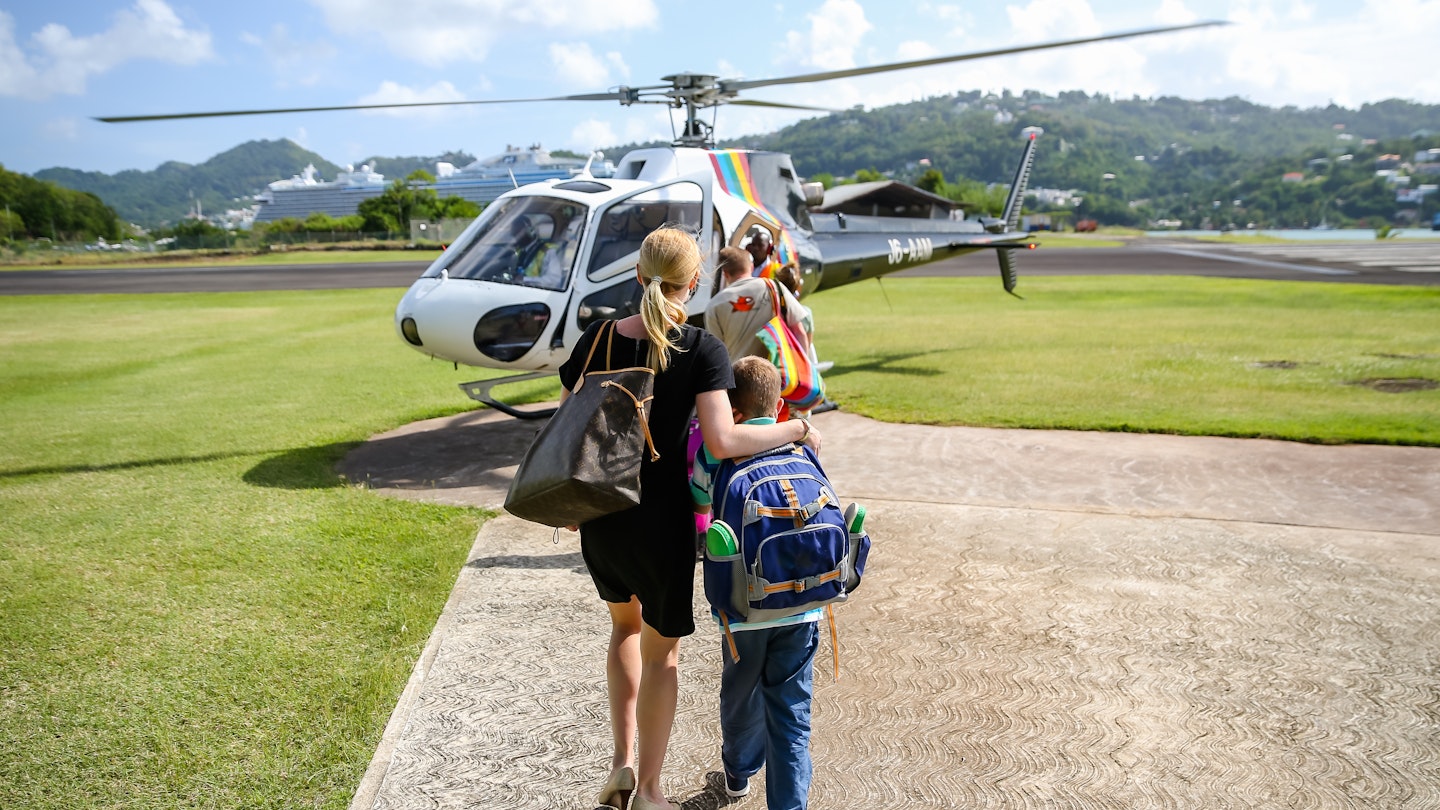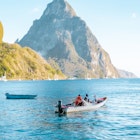St Lucia is a volcanic island and one of the more mountainous in the Caribbean. At only 27 miles long and 14 miles wide, the island is small enough to get from one end to the other in less than two hours.
But with sights like the Sulphur Springs, the famed Pitons, multiple cascading waterfalls and the opportunity for reef diving and snorkeling, you’ll want to spend more than a few hours exploring every lush corner of the island. Walking is not practical for longer distances but there are several other ways to get around the Helen of the West Indies.
Hiring a car gives the most flexibility
Driving is probably the ideal way to explore the island at your leisure. But, as a visitor, you will need a temporary permit to operate a vehicle in St Lucia. That can be obtained at the airport’s immigration station, a rental car company or a police station. It costs US$20 or EC$54 (Eastern Caribbean dollar) and is valid for three months.
If you have an international driving permit, it will need to be stamped at either Hewanorra International Airport on the southern end of the island or George F.L. Charles Airport in Castries. Some rental car companies require drivers to be over the age of 25 for insurance purposes. Rental rates average between US$50 and $100 a day.
St Lucia is very mountainous with sharp turns, blind corners and narrow roads so drive carefully, especially at night. There are also a handful of roundabouts which can be confusing. For adventurous explorations, a 4WD vehicle is highly recommended. Parking is free on the majority of the island. However, it’s difficult to find parking in the capital city of Castries during the day except for the paid spots in the central part.
Tips for driving in St Lucia: Traffic tends to be heaviest between the capital and the north during the morning commute between 7am and 8am, at midday and during the afternoon from 4:30pm to 6pm. Be sure to allocate enough time to get to your destination.
Bus stops are not always clearly marked so approach with caution if a bus is momentarily parked off the shoulder of the road. Bus drivers tend to pull back into traffic with little warning. Always be aware and on the lookout for local dogs sleeping along the roadside in residential neighborhoods as well as an errant cow or horse attempting to cross the highway.
There are usually ongoing roadworks in multiple areas so keep an eye out for that and deep potholes as well. Most importantly, remember to drive on the left-hand side of the road.

Sail from beach to beach in a water taxi
Water taxis are an alternative to traditional land transportation and an efficient way to get around the beaches, waterside towns and villages. Services are available from Reduit Beach in the north and Marigot Bay on the west coast.
Operators pick up guests from the beach, the bay, cruise liners, and in some cases resorts for sightseeing and shopping excursions to the Castries Market, Piton climbing, Fish Friday at Anse la Raye or Gros-Islet, snorkeling and fishing trips. Prices start at USD$15 for a return trip.
Rideshare apps have arrived in St Lucia
St Lucia is fairly new to the rideshare space with a few companies emerging in the last couple of years. Allez follows the Uber and Lyft model by using GPS to match passengers with service providers based on their geolocation. To ensure safety, users will receive the name of the selected driver and a complete description of the vehicle with the registration number before arrival. It’s a cashless transaction using debit or credit cards.
The bus is a perfect way to protect your budget
The primary mode of transportation for most residents is the minibus. These are privately run and serve the towns, cities and villages within the island’s 10 districts. Authorized buses have green number plates beginning with the prefix M.
It’s an inexpensive way to navigate the island. Fares typically range from EC$1.25 for short trips to EC$10 for a longer journey. For example, a ride from Castries to the Rodney Bay area costs EC$2.50.
US Dollars and Euros are generally accepted but local currency is preferred. Stops are marked by concrete slabs — some with galvanized coverings — just off the side of the road and can be flagged down with the wave of a hand. Let the driver know where you are headed in advance and they will direct you accordingly. Depending on the route, buses run as early as 6am until 11pm. Buses are very infrequent on Sundays.

Taxis are a great alternative to hiring a car
Outside of renting a car, the easiest way to get around is via taxi. Taxi companies are plentiful and drivers are typically stationed at stands outside major locations like the airport, supermarket and mall. You will recognize an authorized taxi by the light blue number plate with a TX prefix.
You can also telephone or organize a pick-up via your accommodation – the fare varies by destination. Taxis in St Lucia are not metered and prices are not completely regulated. The rate is estimated and will fluctuate depending on the cost of fuel, the number of people in your travel party and stops along the way.
A one-and-a-half to two-hour trip from Hewanorra International Airport to the popular Rodney Bay area in the north is usually anywhere between US$80 and $100. Credit and debit cards are not accepted as payment so be sure to carry cash. Eastern Caribbean dollars are also accepted. Remember to always verify the rate and currency before booking a trip.
Live the high life on a helicopter
Travel in either direction from Hewanorra International Airport in the south and the multiple hotels on the northern end of the island can take almost two hours depending on traffic flow. A helicopter ride significantly cuts down on the commute. St. Lucia Helicopters operates a 10-minute shuttle between the two local airports for USD$190 per person, one way.
The trip doubles as an aerial tour with bird’s eye views of St Lucia’s tallest peak Mount Gimie, the Roseau Dam, the Atlantic Coast and Marigot Bay. Children under two fly free (they sit on their parent’s lap) and those under 12 receive a 10% discount when booked directly with the company.
The West Coast Shuttle, which is only available from the George F.L. Charles Airport to Hewanorra International Airport, is five minutes longer and includes views of the West Coast Shoreline (reefs), the Pitons, the rainforest and the Soufriere Volcano. Prices start at USD$205 per person, one way.
All flights are scheduled on demand during daylight hours. A minimum of four passengers is needed to confirm flights but the helicopter can hold a max of six.
Accessible transportation in St Lucia
If there’s one area where the island can be found wanting, it’s the availability of accessible transportation. However, Evergreen Passenger Transport Ltd has wheelchair-accessible transport that is available to book for hotel transfers and tours. Email to enquire about reservations.












